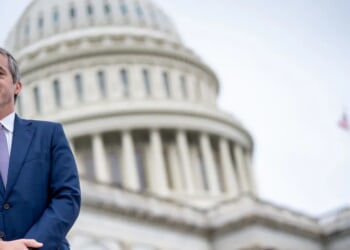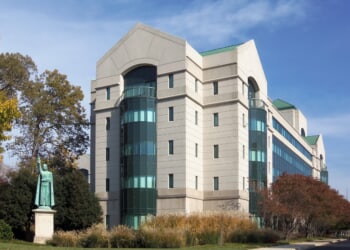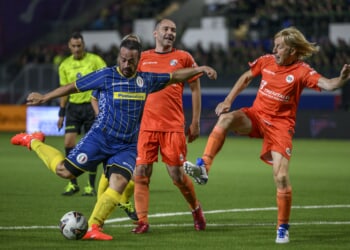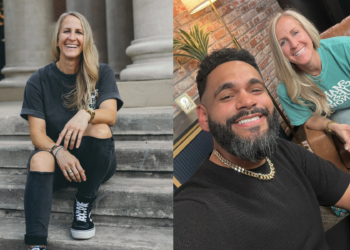The American Academy of Pediatrics lit the fuse in 2023. Their recommendation to use GLP-1 weight-loss drugs in children and adolescents wasn’t just a nod to pharmaceutical innovation — it was a signal flare to industry, a green light to experiment on the developing brain. And experiment they did. A review of more than 310,000 patient records reveals the consequences: a 65 percent surge in prescriptions. Some might call this progress. They’re wrong. This is mass chemical intervention dressed up in a lab coat.
Before the guidelines, semaglutide — a compound found in drugs like Ozempic and Wegovy — was prescribed to just 2.5 percent of young patients. Afterward? Nearly 27 percent. That’s a tenfold leap. Not a cautious rollout. A gold rush. Pediatricians, parents, and policymakers have quietly signed off on the neurological reprogramming of an entire generation. And the worst part is that no one really knows what’s coming next.
The adolescent brain is not a stable system. It’s a construction site — messy, malleable, unfinished. Neural pathways aren’t locked in; they’re still sketching out the blueprints. Now imagine detonating a synthetic appetite suppressant inside that fragile architecture. GLP-1 drugs don’t simply reduce hunger. They reshape the way the brain processes reward. They hijack pleasure circuits. They override natural instincts.
These drugs activate GLP-1 receptors clustered deep in the brain’s control centers — the hypothalamus and the hippocampus — regions that govern appetite, memory, and emotion. Hit those receptors hard enough, often enough, and the brain gets the memo: stand down. Natural production slows. Why make your own when the supply’s outsourced? The result is all-out chemical dependence. The brain no longer knows how to function without its pharmaceutical crutch. What starts as treatment quickly becomes training. And the lesson is brutal: trust the drug, not yourself. This isn’t speculation — it’s basic neurobiology.
Children raised on GLP-1s risk never developing the internal cues that regulate hunger and satiety. They don’t learn how to handle emotional eating or self-restraint — not because they’re lazy or weak, but because their neurochemistry has been outsourced to Pfizer. Appetite becomes an app you toggle with a syringe. When the meds stop, they don’t just regain weight. They’re left with a neurological void.
And that’s just the start. GLP-1 drugs significantly alter dopamine signaling. That’s the molecule of reward, of drive, of wanting. The same pathway involved in love, ambition, addiction, and joy. Adolescents are especially vulnerable, with brains primed to seek novelty, risk, and stimulation. Tinker with that system too early, and you don’t just risk temporary imbalance. You set the trajectory for a lifetime.
The data we do have should send chills down every parent’s spine. Early dopamine interference has been linked to long-term increases in depression, anxiety, and addictive tendencies. The adolescent brain doesn’t forget what you teach it, especially when what you’re teaching it is that normalcy requires a drug. That happiness, motivation, even basic social pleasure, must be chemically assisted. And when the drug goes away, so does the joy.
The physical effects aren’t any more comforting. Gastroparesis, where the stomach effectively shuts down, has been reported in growing numbers of young patients. Think about that. A child with a defective digestive system, living with constant nausea, unable to eat without discomfort. This isn’t wellness. This is cruelty repackaged in pastel-colored marketing. There’s also the psychological devastation. Children who lose weight on GLP-1s are often told — implicitly or explicitly — that their natural body is unlovable. The drug becomes not just a treatment, but an identity. When the weight inevitably returns, so does the shame. The message etched into their psyche is simple: Without this drug, you are a failure. You are unworthy.
Even the social cost is staggering. Food is not just fuel. It’s communion. It’s birthday cake, Sunday roasts, and late-night snacks with friends. Children on GLP-1s often withdraw from those moments, too anxious to eat in front of others, too nauseated to participate. What happens when you chemically sabotage joy itself? You don’t just medicate the body — you amputate part of the soul.
What’s driving all this isn’t careful science — it’s something far uglier. Not caution, but commerce. Not concern, but cosmetic panic. A pharmaceutical response to a cultural breakdown. We’ve created a society that would rather drug children into thinness than confront the deeper issues: ultra-processed diets pumped out by billion-dollar food conglomerates, homes hollowed out by absent parents and broken routines, bodies kept idle by screens, and a society that sneers at self-discipline while worshipping instant results. This isn’t medicine — not in the Hippocratic, healing sense. This is pharmaceutical theology, a new belief system where the body is inherently flawed, the brain is defective by design, and salvation comes pre-filled in a syringe. The rapid rise of GLP-1 prescriptions should be viewed as a societal confession. A signal that we’ve stopped believing in children’s innate ability to grow, stumble, self-correct, and mature. We’ve traded mentorship for medication. Parenting for prescriptions. Human resilience for chemical compliance. And when the reckoning comes — if it comes — it will be too late for many. The price won’t be counted in nausea, weight regain, or even lawsuits. The real cost will be in the quiet, invisible loss of minds that were never given the chance to finish becoming human.
READ MORE by John Mac Ghlionn:


![Former Bravo Star Charged After Violent Assault Using a Rock-Filled Sock in Tennessee Walmart [WATCH]](https://www.right2024.com/wp-content/uploads/2025/07/Former-Bravo-Star-Charged-After-Violent-Assault-Using-a-Rock-Filled-350x250.jpg)



![Karoline Leavitt Levels CNN's Kaitlan Collins and Other Legacy Media Reporters [WATCH]](https://www.right2024.com/wp-content/uploads/2025/07/Karoline-Leavitt-Levels-CNNs-Kaitlan-Collins-and-Other-Legacy-Media-350x250.jpg)
![Man Arrested After Screaming at Senators During Big Beautiful Bill Debate [WATCH]](https://www.right2024.com/wp-content/uploads/2025/06/Man-Arrested-After-Screaming-at-Senators-During-Big-Beautiful-Bill-350x250.jpg)


![Illegal Alien Walked Free After Decapitating Woman, Abusing Corpse for Weeks [WATCH]](https://www.right2024.com/wp-content/uploads/2025/07/1753013138_Illegal-Alien-Walked-Free-After-Decapitating-Woman-Abusing-Corpse-for-350x250.jpg)





